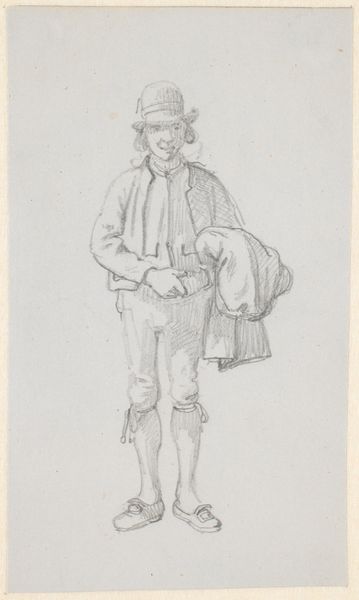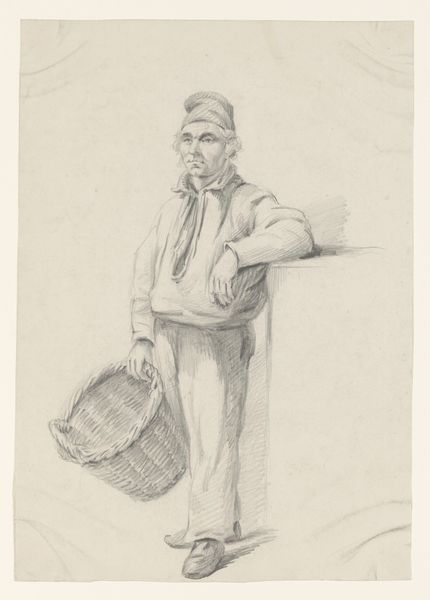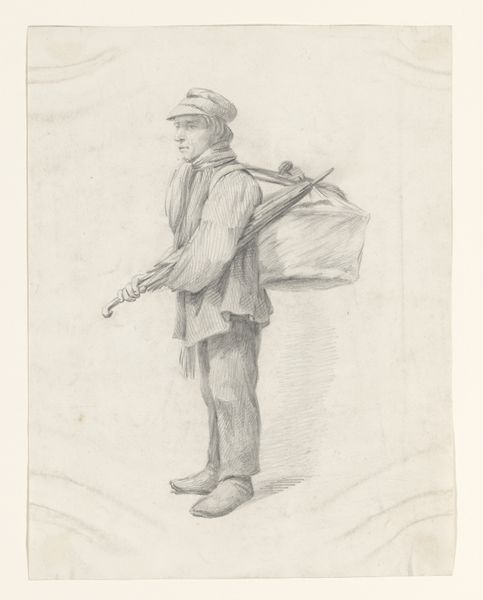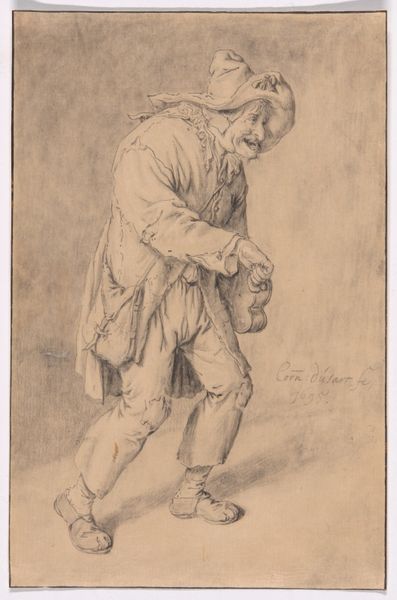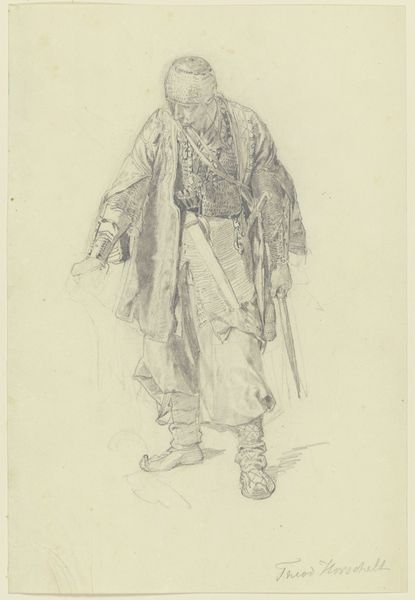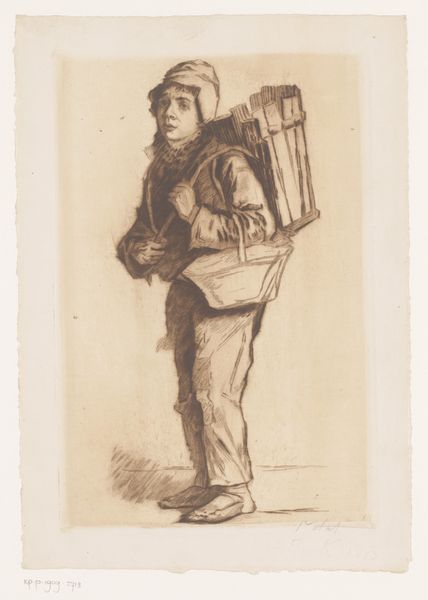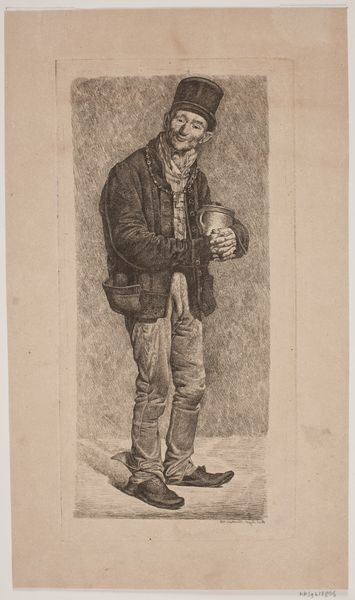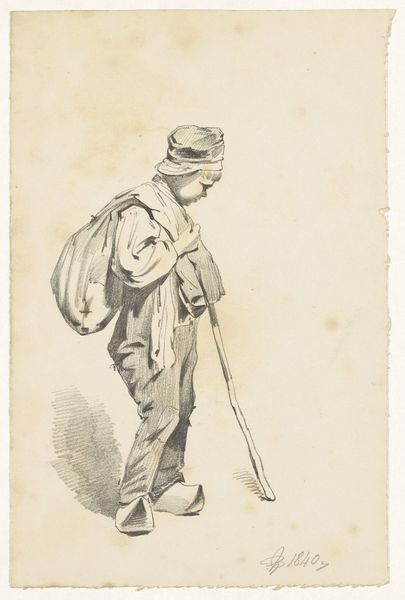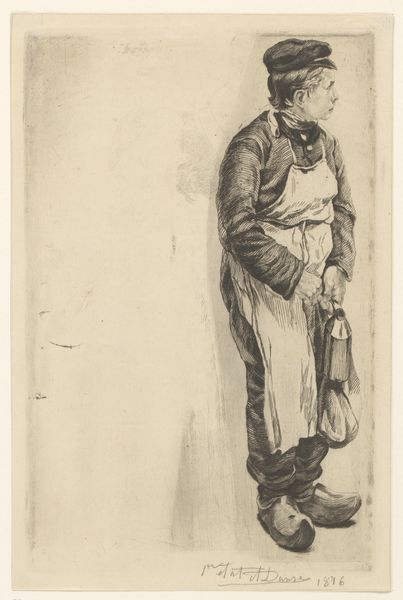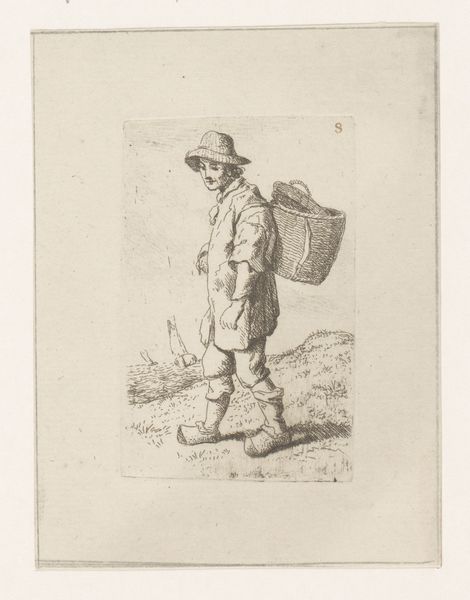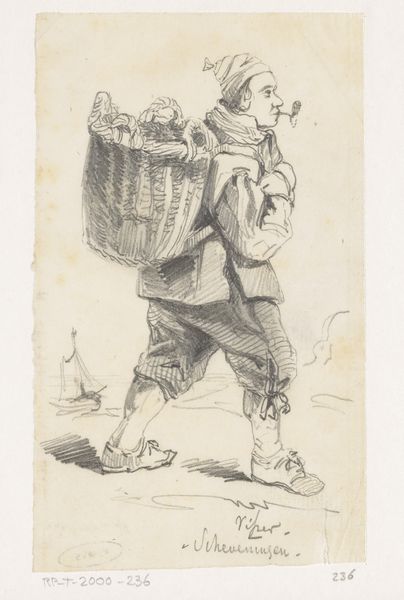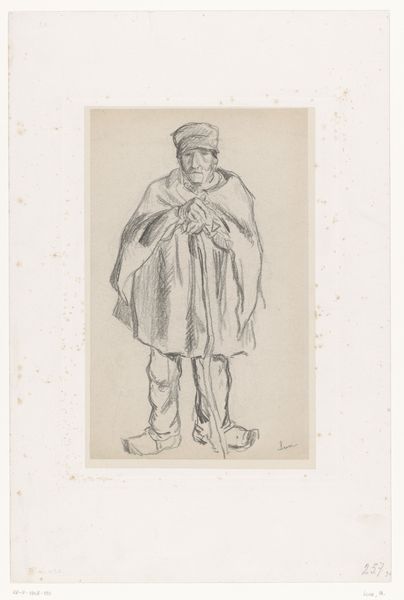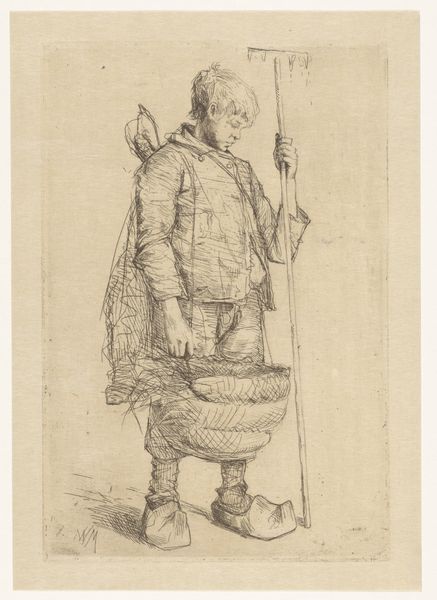
drawing, pencil
#
portrait
#
drawing
#
romanticism
#
pencil
#
genre-painting
Dimensions: height 271 mm, width 203 mm
Copyright: Rijks Museum: Open Domain
Curator: Here we have Pieter Christoffel Wonder's drawing, titled "Boer met pijp in de mond en emmer in de hand", which roughly translates to "Farmer with pipe in mouth and bucket in hand," created sometime between 1790 and 1852. It's a pencil drawing showcasing the artist's romanticism. Editor: He looks tired. Not dramatically, but in the way of someone whose body is just constantly reminding them it exists. All conveyed through simple lines and shading, which is rather impressive, no? Curator: Indeed. Consider how this artwork can be contextualized within broader discussions of labor and representation during this period. Wonder’s focus on the farmer, pipe in mouth, invites us to contemplate not just individual experience but also prevailing attitudes towards laboring classes. How are rural communities framed, and to what end? Editor: Right, right… framed. Like an exhibit A for some social theory class! But seriously, it is powerful how he captured that sense of… weary dignity. It makes me wonder about the relationship between the artist and his subject, no? Curator: Exactly. Wonder, though recognized in his time, often grappled with social positioning in relation to his subjects. This connects with the romanticized visions that emerged within broader sociopolitical power dynamics. How much of a distance existed between artist and subject at the time? Is that visible, or does it collapse due to a will to elevate this worker through art? Editor: Or is it Wonder projecting his own "wondering" onto this farmer's image? Perhaps he is yearning for a simpler life, a different way of being… maybe through the haze of pipe smoke. Curator: Which brings us back to that key theme of Romanticism…a sentimental vision often obscuring complexities of actual living and material conditions. What stories are privileged, and who gets to tell them? Editor: It is beautiful to think that even within this 'romanticised' take, a true connection – or at least, a sincere effort to connect – still breathes life into this seemingly simple drawing. It's quiet, unassuming, but deeply resonant. Curator: Agreed. It prompts us to critically reflect upon social narratives and their aesthetic manifestations. Editor: In the end, it's more than just a farmer with a pipe; it's us seeing ourselves.
Comments
No comments
Be the first to comment and join the conversation on the ultimate creative platform.
